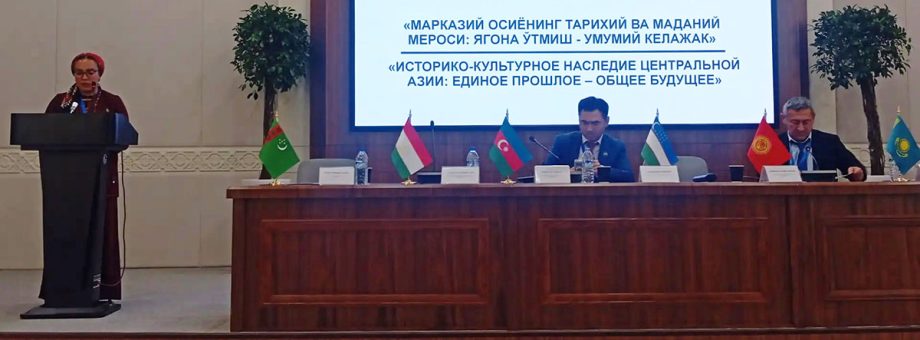Archaeology: A Dialogue of Civilizations Through the Ages

The international congress “Spiritual Heritage and Enlightenment in Central Asia” continues its work in the capital of Uzbekistan, with active participation of representatives from Turkmenistan. The topics discussed by the participants are quite extensive and deeply meaningful.
This is understandable — spirituality and enlightenment are profound concepts that reflect the deep roots, traditions, and customs of the peoples of Central Asia. It is also logical that discussions and presentations on these issues are impossible without knowledge of the archaeology and history of the region’s countries. That is why almost every speaker at the congress, its plenary sessions, and thematic panels touched upon various aspects of history and archaeology.
It is indisputable that the comprehension of spiritual heritage is impossible without precise knowledge of the material components of history. Here archaeology plays a special role, as a science that reveals the deep layers of the past and allows us to trace the origins of statehood, culture, and worldviews of the peoples of the region. Today, archaeology is becoming not only a study of antiquity, but also one of the key directions of scientific diplomacy, opening paths to cooperation, dialogue, and mutual respect among countries.
As is known, for thousands of years the territory of Turkmenistan lay at the crossroads of ancient trade routes, cultural zones, and centers of civilization. This enriched the country with a unique heritage, the study of which has become an important part of the humanities and international scientific cooperation. Developing scientific research, scientists of Turkmenistan actively cooperate within the framework of international projects supported by UNESCO aimed at preserving the country's historical and cultural complexes.
Among the sites attracting the attention of the world scientific community, special significance belongs to Gonur-depe — the ancient center of the Margiana civilization — as well as the ancient cities of Nisa and Merv, which are included in the UNESCO World Heritage List. Their study has expanded our understanding of the origins of statehood, social structures, crafts, art, and the spiritual culture of the regions that stood at the roots of later Eastern civilizations.
Archaeology in Turkmenistan today not only reveals new pages of the past, but also strengthens the ties of the present. It forms a culture of dialogue, promotes mutual understanding between peoples and plays an important role in affirming the values of peaceful cooperation. Confidence in the future of scientific exchange, support from the state and international organizations, as well as the growing interest of world science in the ancient heritage of the region allow us to speak with confidence about the continuation of productive international cooperation between scientists and historians.
As noted in her speech at the section “Material Culture and Spiritual Heritage of Central Asia”, Senior Researcher of the Institute of History and Archaeology of the Academy of Sciences of Turkmenistan, Jennet Ezimova:
“Turkmenistan views the preservation of cultural and historical heritage as part of its responsibility to world civilization.”
The Central Asian region has long been a place of intense cultural interrelationships, trade routes, spiritual exchange and the formation of great civilizations. Therefore, understanding the heritage that we inherited from our ancestors is not only a scientific task, but also an important cultural mission. And through scientific cooperation and cultural ties, not only professional relations between researchers are strengthened, but also an atmosphere of trust between states is formed.


 NEWS
NEWS